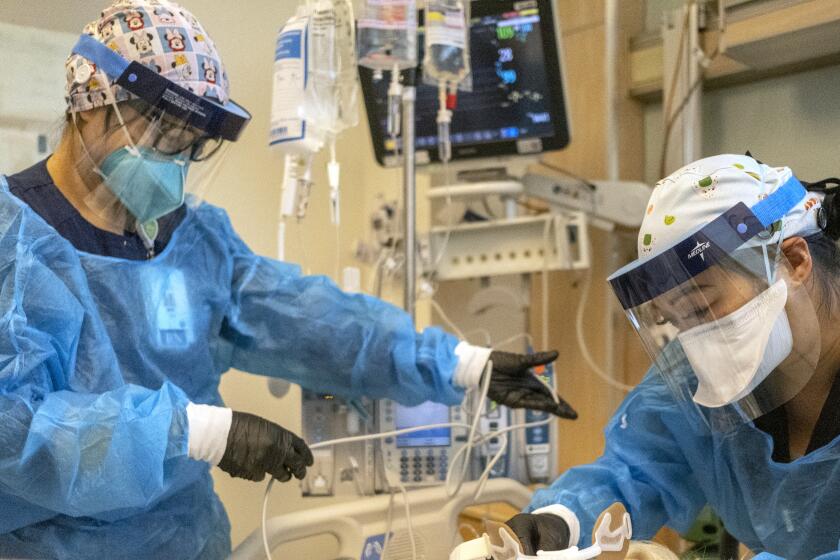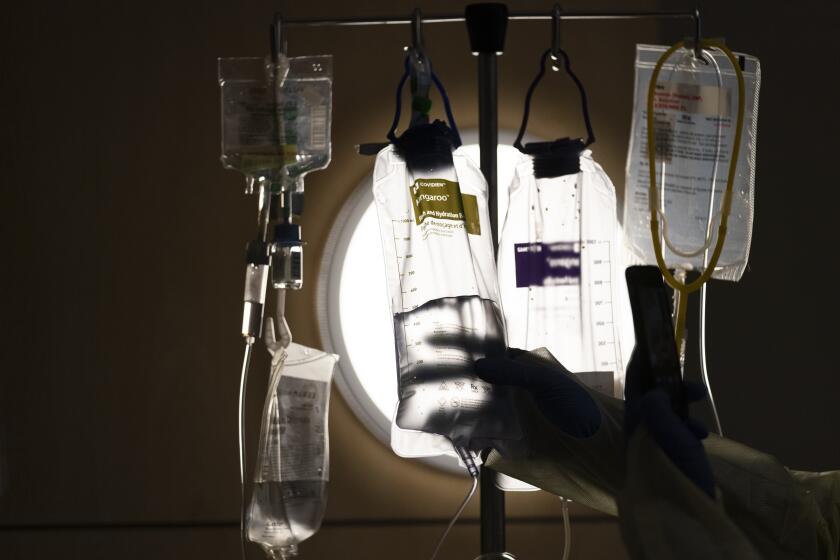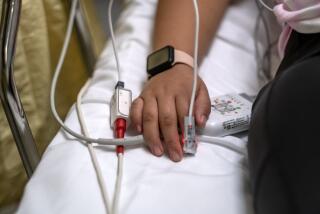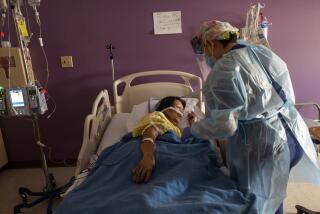San Diego hospitals overwhelmed by coronavirus test demand and staff shortages
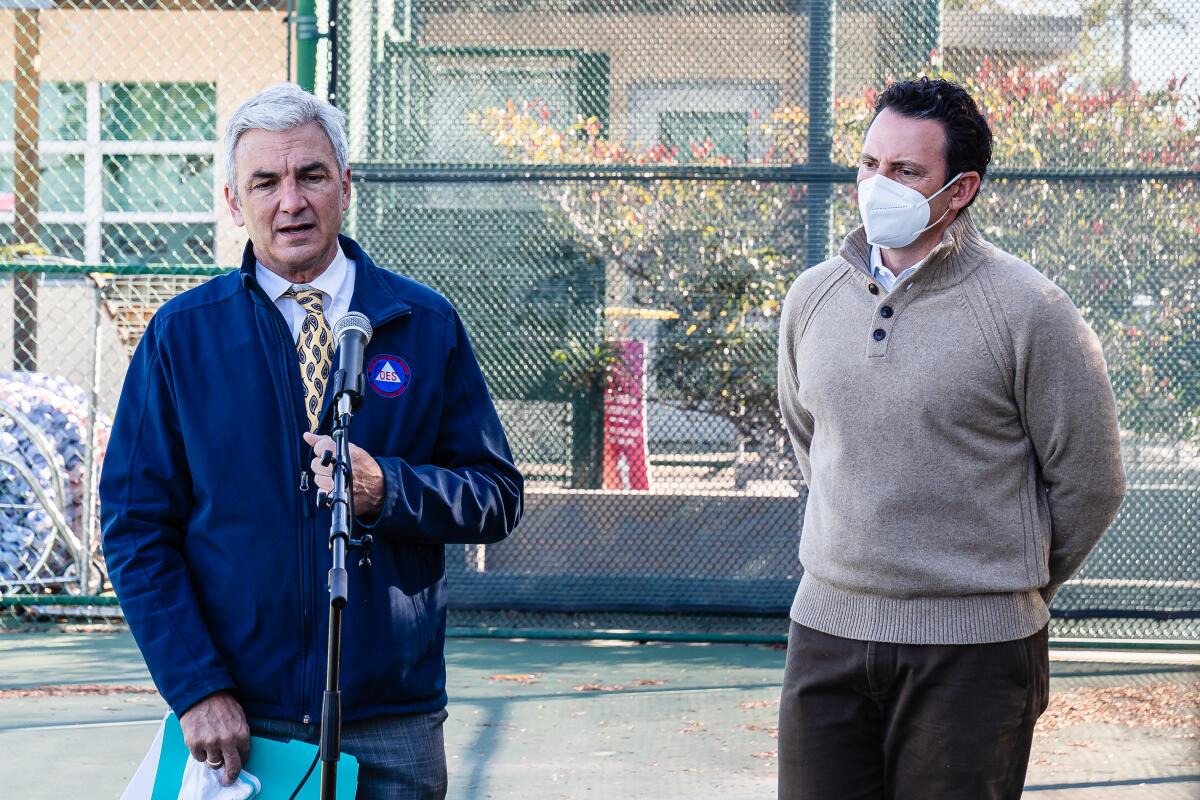
When their emergency departments get really busy, hospitals often go on diversion status, which means they are significantly reducing their ambulance traffic to buy time to handle the crush of patients already sitting in their waiting rooms.
But as the number of patients arriving for care in San Diego County continued to increase Monday, almost all emergency rooms were on diversion, a rare situation in which sending ambulances elsewhere no longer made sense. Nobody had any extra capacity.
The dire situation was made clear in a memo obtained by the San Diego Union-Tribune and sent by the county emergency services office to all hospitals at 2:45 p.m. The memo indicated that San Diego County emergency department “capacity is exhausted,” with more than 80% of all civilian hospitals in the region already diverting ambulances.
The bulletin warned that emergency services personnel should expect “very long” waits to offload patients.
Monday brought the region’s highest single-day new case total, with 8,313 positive coronavirus tests reported to the county health department. Earlier in the day, county public health officials said the region’s total number of hospitalized COVID-19 patients had reached 600, far fewer than the 1,800 seen during the same time last year when vaccines were only just being rolled out.
Roughly two-thirds of patients who have tested positive at the four hospitals run by the L.A. County Department of Health Services were admitted for something other than the coronavirus.
Dr. Eric McDonald, the county’s chief medical officer, said hospitals are prepared to handle a coming surge, though staffing was a concern.
“It appears now that our staff, our supplies and our structure at our healthcare systems will be able to handle that stress, but there is always some uncertainty,” McDonald said, speaking outside a county testing center in City Heights.
That’s not to say, however, that the increase in patients, especially those flooding emergency rooms, is going to go away quickly.
“At the present time, I think that things will worsen before they improve,” McDonald said, adding that those with mild COVID-19 symptoms, or no symptoms at all, should not go directly to hospital emergency rooms for testing or care.
But many are.
Dr. Ghazala Sharieff, chief medical officer at Scripps Health, said the health system’s emergency rooms were so full at midafternoon that many patients, most without COVID-19, were waiting for beds to open up so they could be admitted.
“We have 82 patients holding across our emergency departments for a bed, and 16 of those are COVID-positive,” Sharieff said.
A big part of the problem, Scripps officials said, is a large number of skilled staffers testing positive for the coronavirus and being unable to work. Scripps Mercy in Hillcrest, for example, had to cancel several surgeries Monday and planned to delay at least seven more Tuesday due to COVID-related absences among those who work in its operating rooms.
Things were tight enough at Rady Children’s Hospital that the San Diego medical center put out an urgent plea to the public to avoid its emergency department and urgent care centers if children needed only testing or had mild symptoms.
Officials on Monday urged people to avoid going to the emergency room unless they have a true medical emergency.
Dr. Scott Herskovitz, director of emergency medical services at Rady, said parents should reach out to their pediatricians or use their health provider’s 24/7 nursing line before going to the ER. The crush of parents filling waiting rooms with relatively minor cases that may or may not be COVID-19 is making it difficult to spot those who have truly dangerous conditions, Herskovitz said.
“Whether it’s people who are seeking testing after an exposure or whether it’s a new case with mild to moderate symptoms, those things inundate the emergency department and make it difficult for us to get to identifying some of those higher-acuity patients,” Herskovitz said.
Though he said that no parent should feel hesitant to bring their child in if they truly need immediate attention, symptoms such as a mild cough, congestion, runny nose and fever can be handled outside an urgent setting.
“If your concern is keeping you up at night, and you’re not able to talk to your pediatrician, then, if it’s that much of a worry, the emergency department is always there for you,” Herskovitz said.
But simply identifying whether mild symptoms are being caused by the coronavirus or one of the other viruses going around this winter is different.
“If it’s a cough, but they’re not having trouble breathing; if there’s congestion but they’re not having trouble breathing; if there is some runny nose but they’re not having trouble breathing; if they’re drinking and able to stay hydrated; those are things that, even in the face of a fever, can be managed without coming into the emergency department,” Herskovitz said.
Federal law, Herskovitz said, requires all who enter ERs to be given a medical screening to determine whether an emergency condition exists. A large number of such screenings, even if they’re for relatively minor symptoms, can swamp available resources.
As it comes time for kids to return to school and day care and for adults to work, the demand for testing continues to increase.
The demand was so strong in La Mesa that the Police Department warned the public to avoid a section of the city due to traffic congestion near a testing site.
Around 2 p.m. Monday, vehicles lined both directions of Parkway Drive approaching the Kaiser Permanente office in La Mesa where tests were being conducted.
Nathan Fletcher, chair of the San Diego County Board of Supervisors, said during Monday’s news conference that he believes that the county and private organizations such as drugstores are doing everything they can to offer as much testing as possible. The situation harkens back to the very beginning of the pandemic, when testing was new and in short supply. As was the case then, leaders are reminding folks to do what’s important even if they don’t have definite confirmation of infection.
“If you can’t get in quickly, and you have symptoms, assume you have it and act accordingly,” Fletcher said.
He added that many of the lines at county testing facilities are made longer by those who return day after day.
“We are trying to encourage people not to come every single day to get tested,” Fletcher said.
More to Read
Sign up for Essential California
The most important California stories and recommendations in your inbox every morning.
You may occasionally receive promotional content from the Los Angeles Times.
